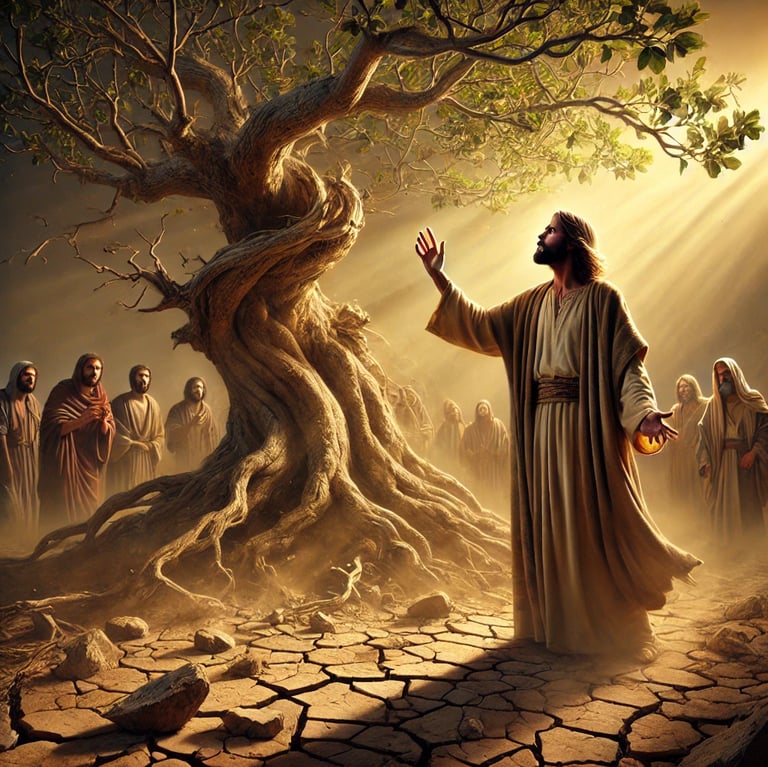Jesus Curses the Fig Tree
"May no one ever eat of your fruit again."
Halo & Light Studios
4/15/20252 min read


Scripture Account: The Cursing of the Fig Tree
The story appears in two Gospels—Mark 11:12–14, 20–21 and Matthew 21:18–22—with slight variations in narrative order.
This is not about Jesus being "hangry"—it's a symbolic prophetic action, deeply rooted in biblical imagery and Israel's spiritual history.
1. The Fig Tree as a Symbol
In Scripture, the fig tree often symbolizes Israel (cf. Hosea 9:10; Jeremiah 8:13; Micah 7:1). A leafy fig tree with no fruit represents a nation full of outward religious signs but lacking true spiritual fruit.
Jesus had just entered Jerusalem on Palm Sunday, and He was on His way to cleanse the Temple—another symbolic act showing how Israel had turned worship into show and commerce. The fig tree and the Temple go together: both had leaves, no fruit.
2. Timing of the Act
Mark notes “it was not the season for figs”, which seems strange. But fig trees produce early small edible buds (called taqsh) even before full figs. So, a tree with leaves should’ve had some sign of fruit.
Its lack of even these pre-fig signs suggests barrenness—a false promise of life. Just like the religious leaders of the time who rejected Christ.
3. A Prophetic Warning
The act was symbolic of divine judgment—not on the tree, but on spiritual hypocrisy. Just as Jesus cleansed the Temple of corruption, He also warns that faith must bear fruit, or it too will wither.
This echoes what John the Baptist had already said:
“Every tree that does not bear good fruit will be cut down and thrown into the fire.” (Matthew 3:10)
Spiritual Lessons for Us
Fruitfulness over appearance: God desires interior conversion, not just outward show.
Urgency of repentance: Just as the tree withered swiftly, judgment can come suddenly.
Power of faith: Jesus ends the moment teaching the power of believing prayer—that we are called not only to avoid barrenness, but to move mountains (Matthew 21:21–22).
Christ is the New Temple: The fig tree and Temple cleansing together show that worship without Christ is empty, and that He Himself is the true vine in whom we must abide to bear fruit (cf. John 15:5).
In Summary:
The cursing of the fig tree is not a tantrum but a living parable—a symbolic judgment against fruitless religion, a call to authentic discipleship, and a lesson in faith. Jesus, as the True Vine, calls us to remain in Him and bear lasting fruit.
